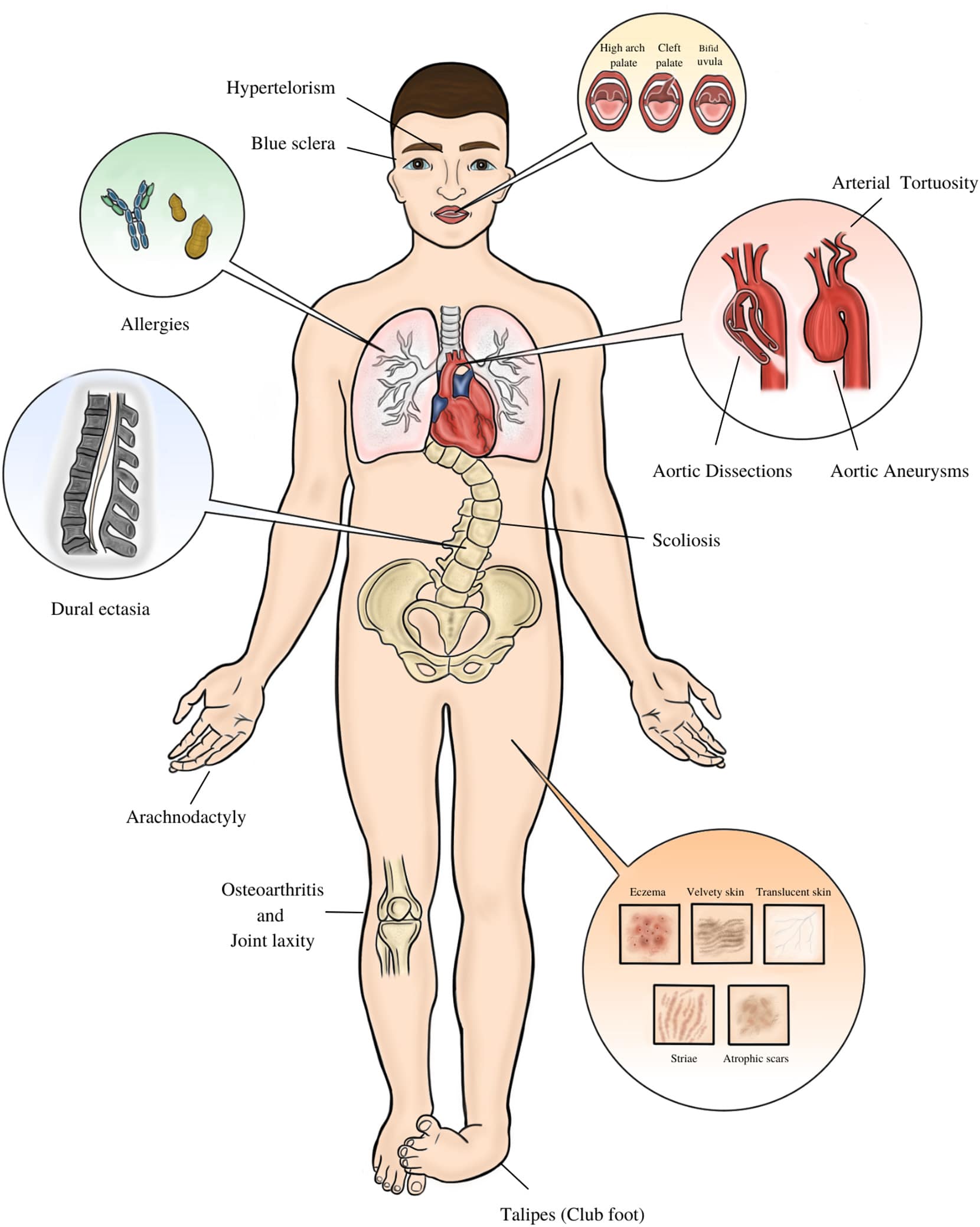◒
Loeys-Dietz Syndrome: Difference between revisions
From WikiMSK
No edit summary |
No edit summary |
||
| Line 10: | Line 10: | ||
LDS can affect the following areas: | LDS can affect the following areas: | ||
* Vascular findings: cerebral, thoracic, and abdominal arterial aneurysms and/or dissections. Aortic root dilatation is the most common (95% of probands) | * Vascular findings: cerebral, thoracic, and abdominal arterial aneurysms and/or dissections. Aortic root dilatation is the most common (95% of probands) | ||
* | * Neuromusculoskeletal findings: pectus excavatum or pectus carinatum, scoliosis, joint laxity, arachnodactyly, talipes equinovarus, cervical spine malformation and/or instability, dural ectasia | ||
* Craniofacial findings: widely spaced eyes (hypertelorism), strabismus, bifid uvula / cleft palate, and craniosynostosis that can involve any sutures) | * Craniofacial findings: widely spaced eyes (hypertelorism), strabismus, bifid uvula / cleft palate, and craniosynostosis that can involve any sutures) | ||
* Cutaneous findings: velvety and translucent skin, easy bruising, and dystrophic scars | * Cutaneous findings: velvety and translucent skin, easy bruising, and dystrophic scars | ||
Latest revision as of 19:55, 5 March 2023
This article is still missing information.

| |
| Loeys-Dietz Syndrome | |
|---|---|
| Inheritance | Autosomal dominant |
| Genetics | Heterozygous pathogenic variant in SMAD2, SMAD3, TGFB2, TGFB3, TGFBR1, or TGFBR2 |
Loeys-Dietz Syndrome (LDS) is a Marfan-like disease that was only discovered in 2005.
Clinical Features
LDS can affect the following areas:
- Vascular findings: cerebral, thoracic, and abdominal arterial aneurysms and/or dissections. Aortic root dilatation is the most common (95% of probands)
- Neuromusculoskeletal findings: pectus excavatum or pectus carinatum, scoliosis, joint laxity, arachnodactyly, talipes equinovarus, cervical spine malformation and/or instability, dural ectasia
- Craniofacial findings: widely spaced eyes (hypertelorism), strabismus, bifid uvula / cleft palate, and craniosynostosis that can involve any sutures)
- Cutaneous findings: velvety and translucent skin, easy bruising, and dystrophic scars
- Other: strong predisposition to allergic and inflammatory disease including atopy, IBD, and eosinophilic gastrointestinal disorders.
It has locus heterogeneity. Multiple different genes can cause the condition. There are five types depending on the gene. There is variation in phenotype even amongst family members with the same pathogenic variant.
Diagnosis
Diagnosis is made by finding a pathogenic variant on molecular genetics PLUS either aortic root enlargement or other compatible systemic features with special emphasis on arterial tortuosity.
Resources
GeneReviews - Loeys-Dietz Syndrome
Literature Review
- Reviews from the last 7 years: review articles, free review articles, systematic reviews, meta-analyses, NCBI Bookshelf
- Articles from all years: PubMed search, Google Scholar search.
- TRIP Database: clinical publications about evidence-based medicine.
- Other Wikis: Radiopaedia, Wikipedia Search, Wikipedia I Feel Lucky, Orthobullets,


